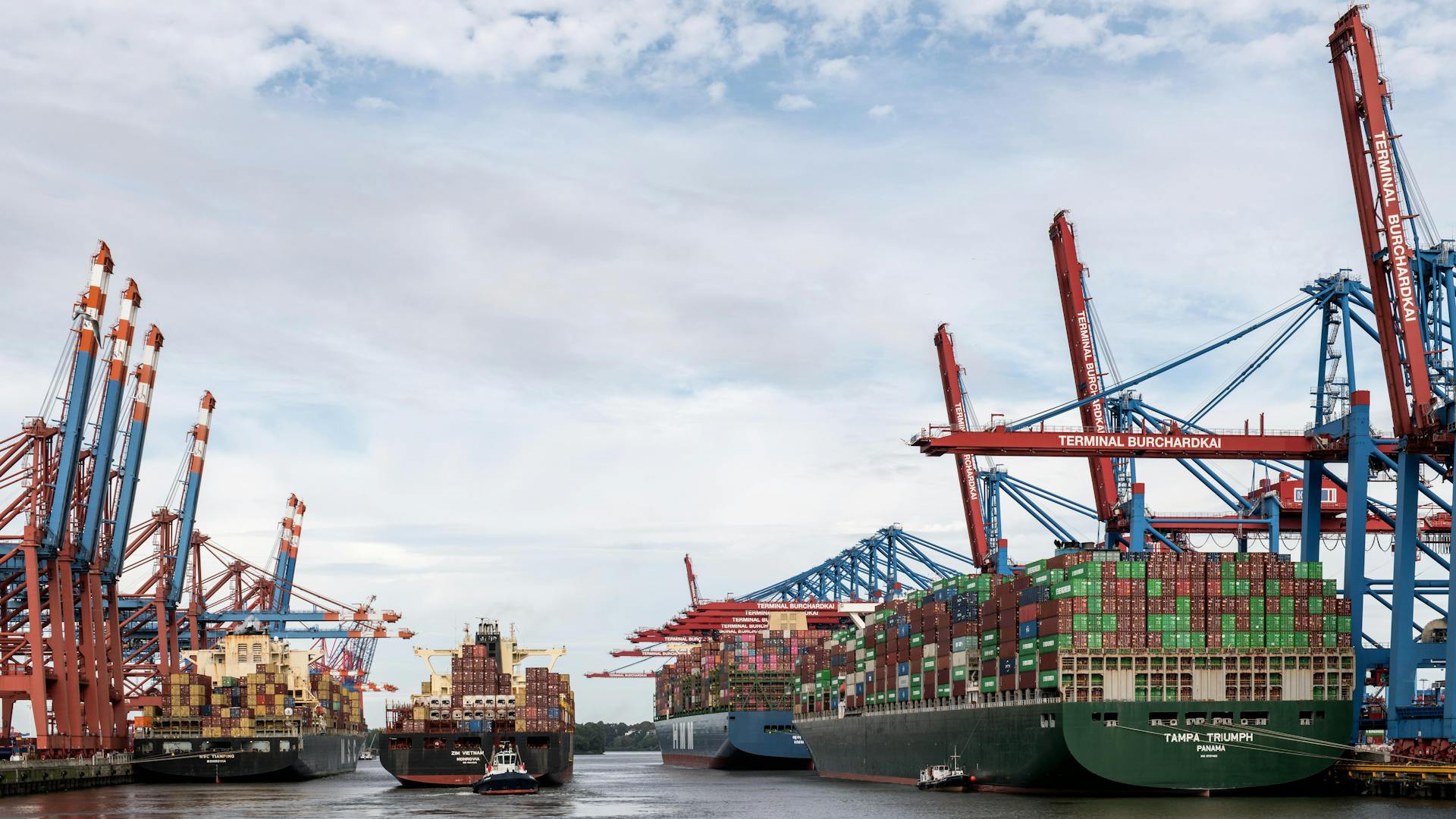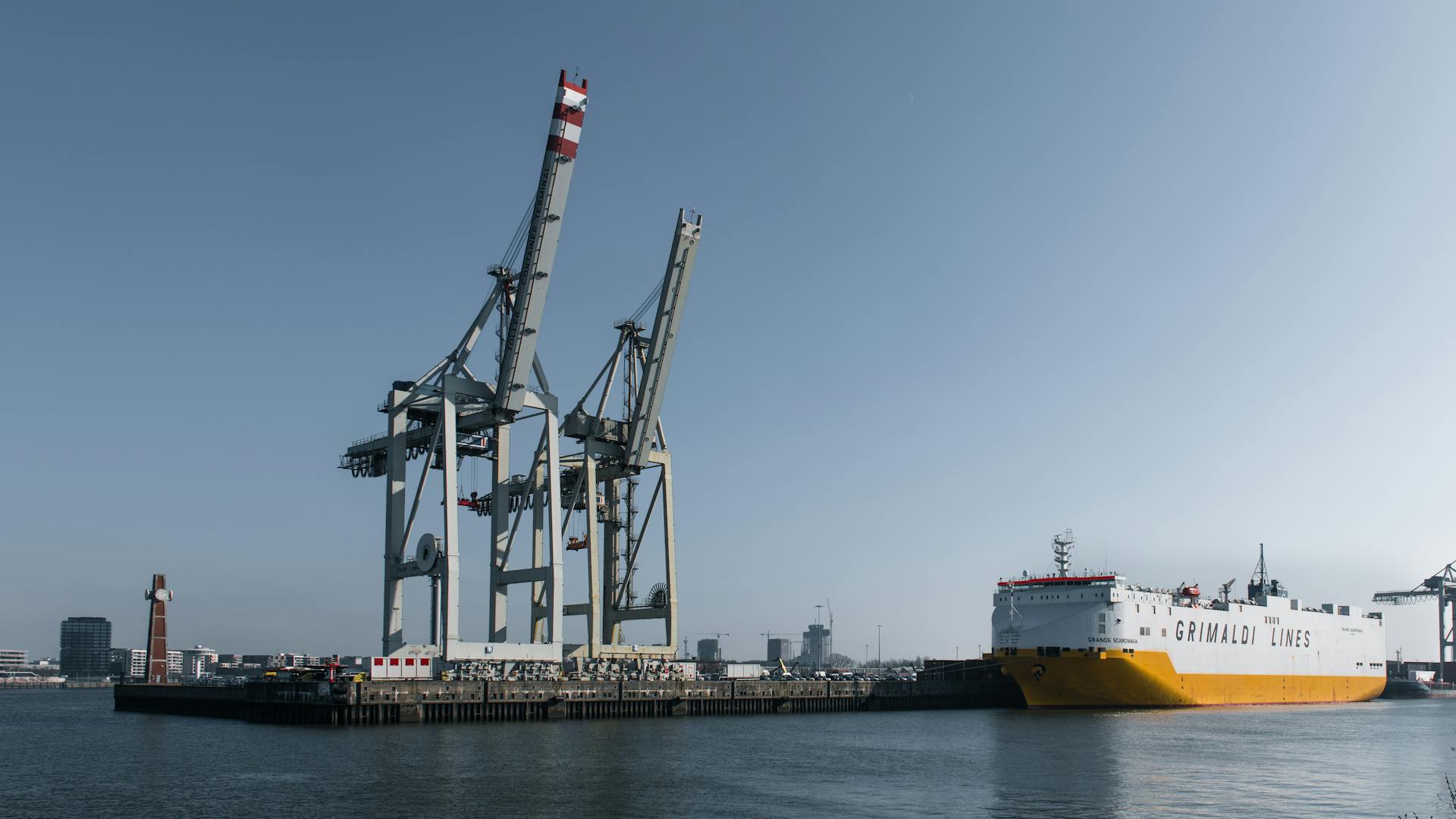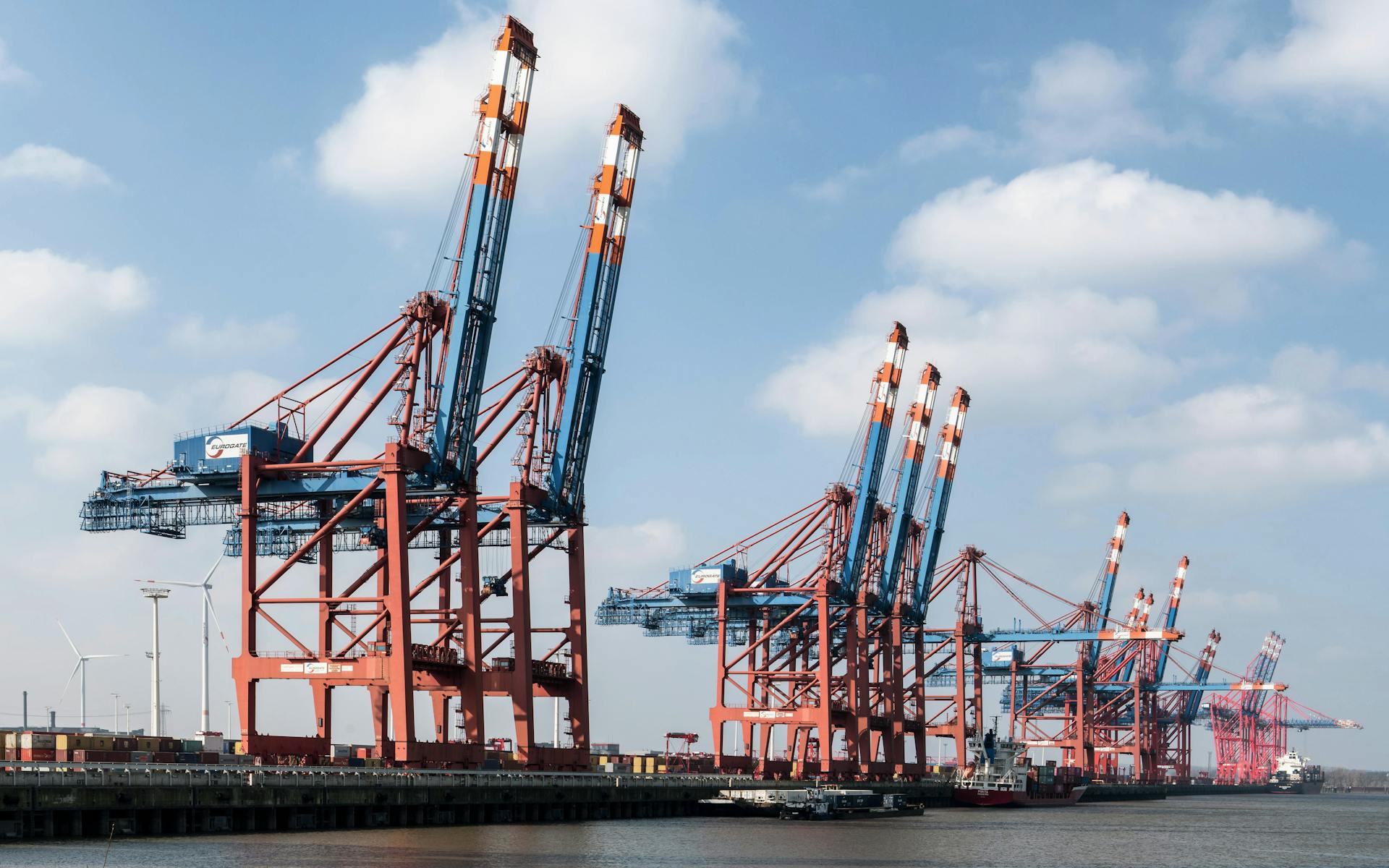
The Hamburg Port is situated at the confluence of the Elbe River and the North Sea, making it a crucial hub for international trade.
This strategic location allows the port to serve as a gateway to Europe, with connections to major shipping routes and trade corridors.
At the heart of the port lies the Elbe River, which flows through the city of Hamburg and provides a natural transportation route for goods and cargo.
The port's proximity to the North Sea also enables efficient access to global markets, making it an attractive choice for shippers and traders.
Infrastructure and Logistics
The Port of Hamburg's infrastructure and logistics are truly impressive. It's the leading foreign trade hub of Germany, serving up to 450 million consumers in European inland markets.
The port's location between the North Sea and the Baltic Sea creates ideal conditions for the exchange of goods with trading partners worldwide. State-of-the-art technology and efficient transport infrastructure support this global connectivity.
Hamburg's rail network is very well developed, offering connections in all directions, with around 2,000 container train connections offered weekly to/from the port. This makes it a key hub for the New Silk Road to China, with 200 scheduled connections per week.
Gateway to Central and Eastern Europe via the Port
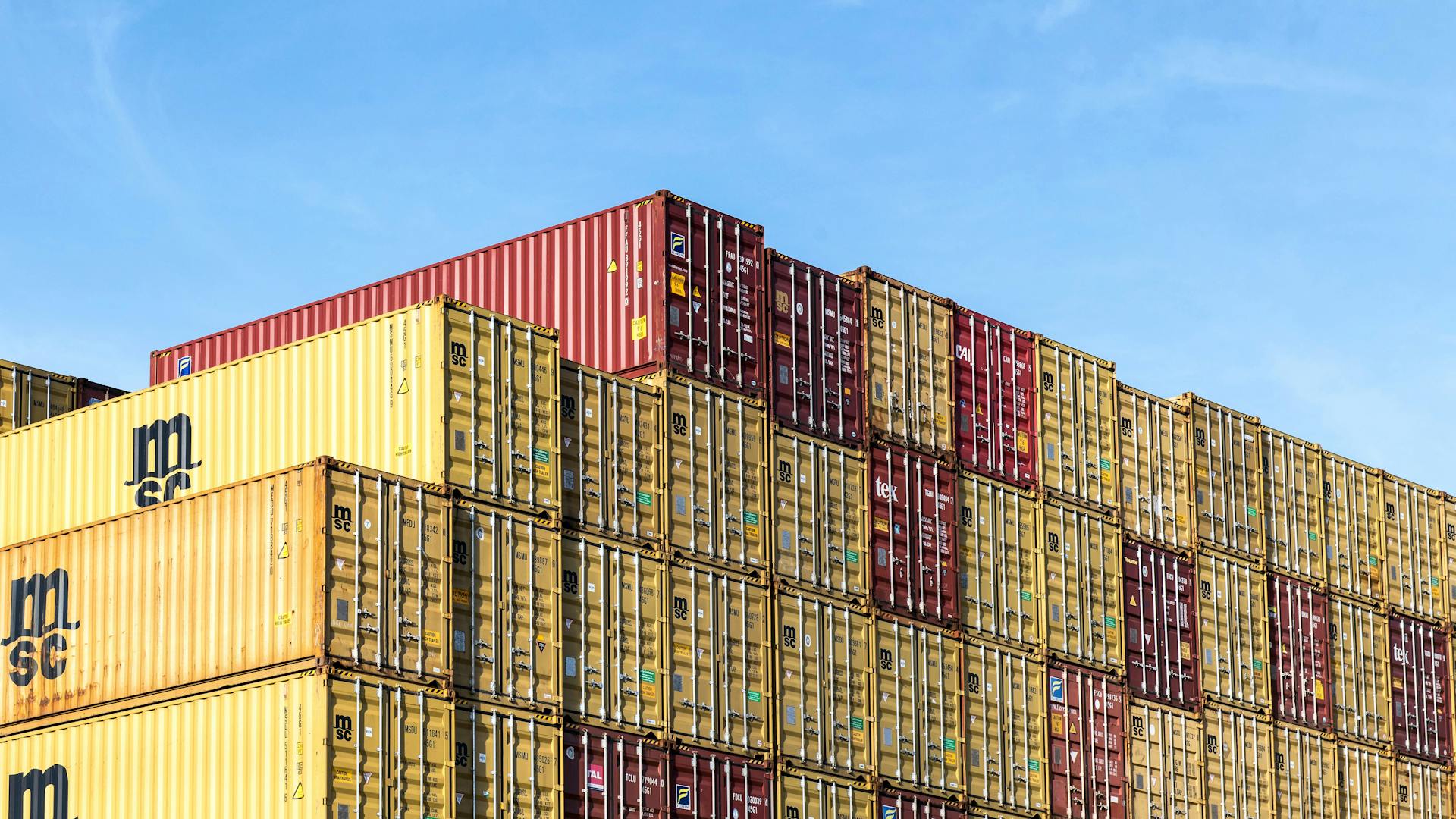
The Port of Hamburg is a crucial gateway to Central and Eastern Europe. Its location allows for low-cost transport connections to worldwide routes via feeder and river barges, rail, and truck.
The port's proximity to the Kiel Canal makes it an ideal location for connections to the Scandinavian region and the Baltic States. This short distance reduces transport costs and increases efficiency.
The Elbe River and Elbe-Seiten Canal provide smooth transport of goods by river barge to southern and central Germany, even reaching the Czech Republic. Alternatively, the well-developed rail network offers connections in all directions.
The Port of Hamburg is also connected to the A7 highway, making it easy to transport goods by truck to the north or south. The A1 highway provides ideal connections to the west and east of Europe.
Digitalise Truck Handling
Digitalise Truck Handling is a game-changer for logistics efficiency.
At Hamburg's Container Terminal Altenwerder, truck access is now managed via the passify app.
This innovative system has been implemented since last week, and it's a result of collaboration between HHLA and passify.
HHLA's partnership with Hellmann has brought expertise in sustainable anchoring of innovations in global medium-sized companies.
Operations and Statistics

The Port of Hamburg is a major player in European inland markets, serving up to 450 million consumers. Its strategic location between the North Sea and the Baltic Sea makes it an ideal hub for trade.
The port generates a significant annual gross value added of around 20 billion euros. This has a direct impact on the local economy and employment.
More than 260,000 people are directly or indirectly employed by the port, making it a vital contributor to the local workforce. Its importance cannot be overstated.
The port's state-of-the-art technology and efficient transport infrastructure enable seamless exchange of goods with trading partners worldwide.
Specific Locations
The Port of Hamburg is strategically located between the North Sea and the Baltic Sea, making it a prime hub for international trade.
Germany's biggest multipurpose port, Hamburg generates a total annual gross value added of around 20 billion euros.
The port directly and indirectly employs more than 260,000 people, making it a significant contributor to the local economy.
Port of Hamburg – Gateway
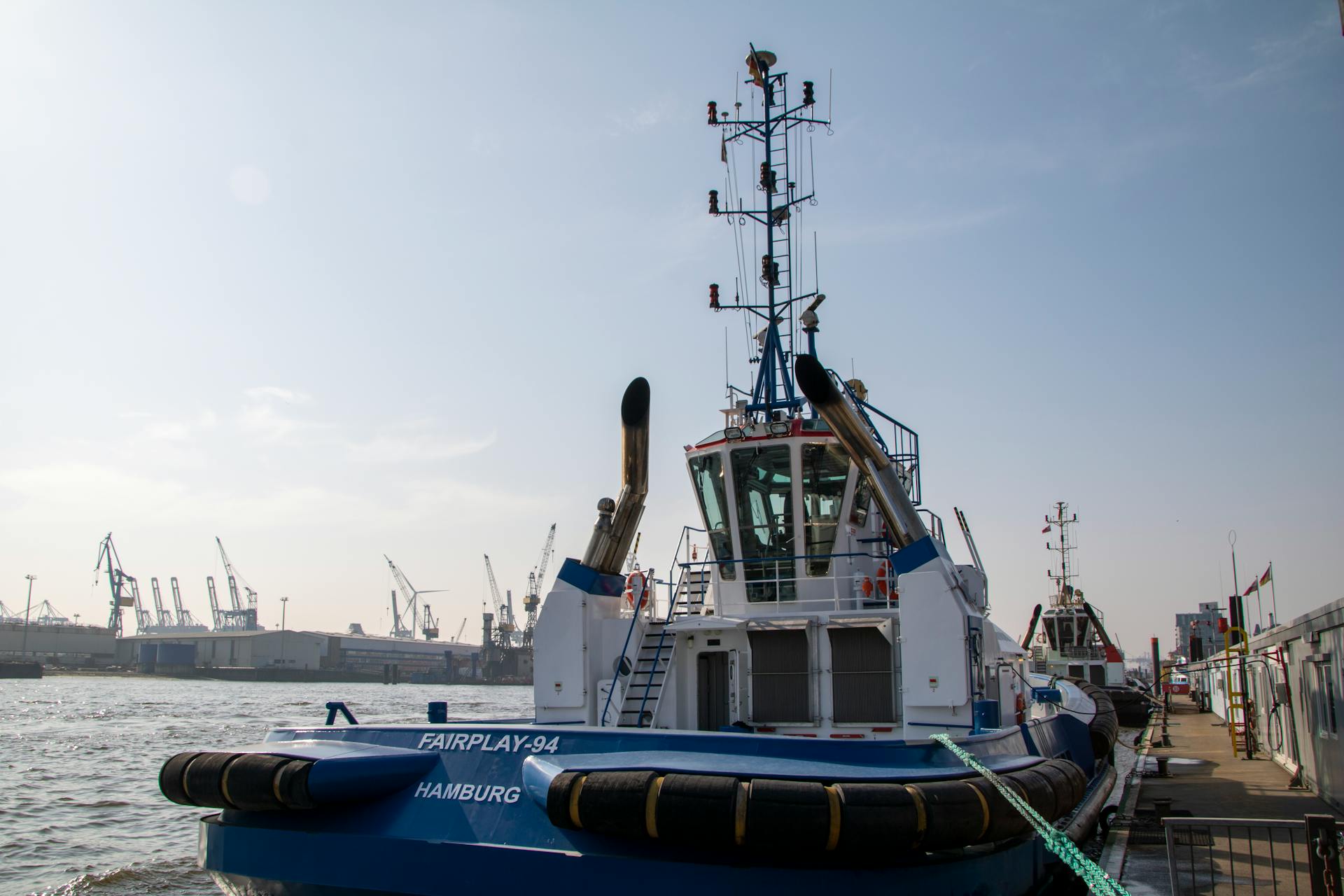
The Port of Hamburg is a crucial hub for European inland markets, serving up to 450 million consumers. Its strategic location between the North Sea and the Baltic Sea makes it an ideal gateway to Central and Eastern Europe.
The port generates a significant annual gross value added of around 20 billion euros. This economic impact is a testament to its importance in the region.
As Germany's biggest multipurpose port, the Port of Hamburg directly and indirectly employs over 260,000 people. This has a substantial ripple effect on the local economy.
State-of-the-art technology and efficient transport infrastructure create the conditions for seamless exchange of goods with trading partners worldwide. This includes data communication systems and high-performance feeder and hinterland connections.
The Port of Hamburg's location lowers transport costs, making it an attractive option for connecting markets in Germany, Central, Eastern, and Northern Europe to worldwide transport routes.
Coal Terminal
The Port of Hamburg is a major player in coal imports, with officials speculating in 2012 that imports may increase due to the construction of the coal-fired Moorburg Power Station.
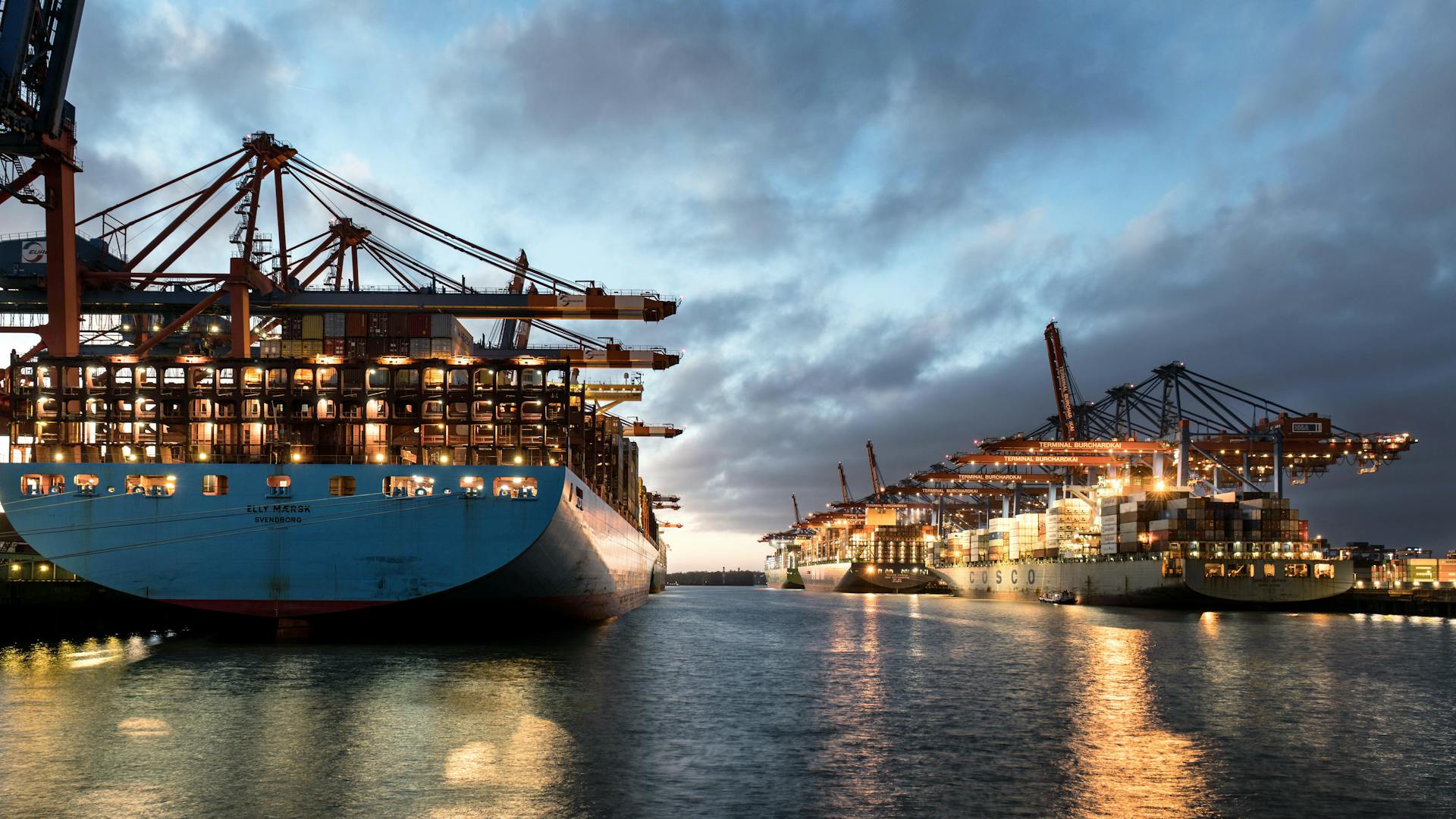
In 2012, the port received roughly five million tonnes of coal per year, mostly bound for power plants in Lower Saxony.
Coal is imported from Scandinavia, South Africa, and Australia, making its way to the port as bulk cargo.
The largest coal terminals in Germany are found in the Port of Hamburg, where coal is handled alongside other bulk goods like ore and building materials.
In 2020, the Port of Hamburg handled a total of 39 million tonnes of bulk cargo, including 19.4 million tonnes of grab cargo goods like ore and coal.
Here's a breakdown of the top bulk goods handled at the Port of Hamburg in 2020:
- Ore and coal: 19.4 million tonnes
- Other bulk goods: 19.6 million tonnes
St. Pauli: Harbour & Reeperbahn
St. Pauli is a unique neighborhood in Hamburg that offers a fascinating blend of maritime charm and vibrant nightlife. You can sit down and watch as ships, ferries, and tugs pass by on the Elbe and the harbour, enjoying the strong sea breeze.
The area is just a few hundred meters away from Hamburg's world-famous "sinful mile" – the Reeperbahn.
Innovations and Events
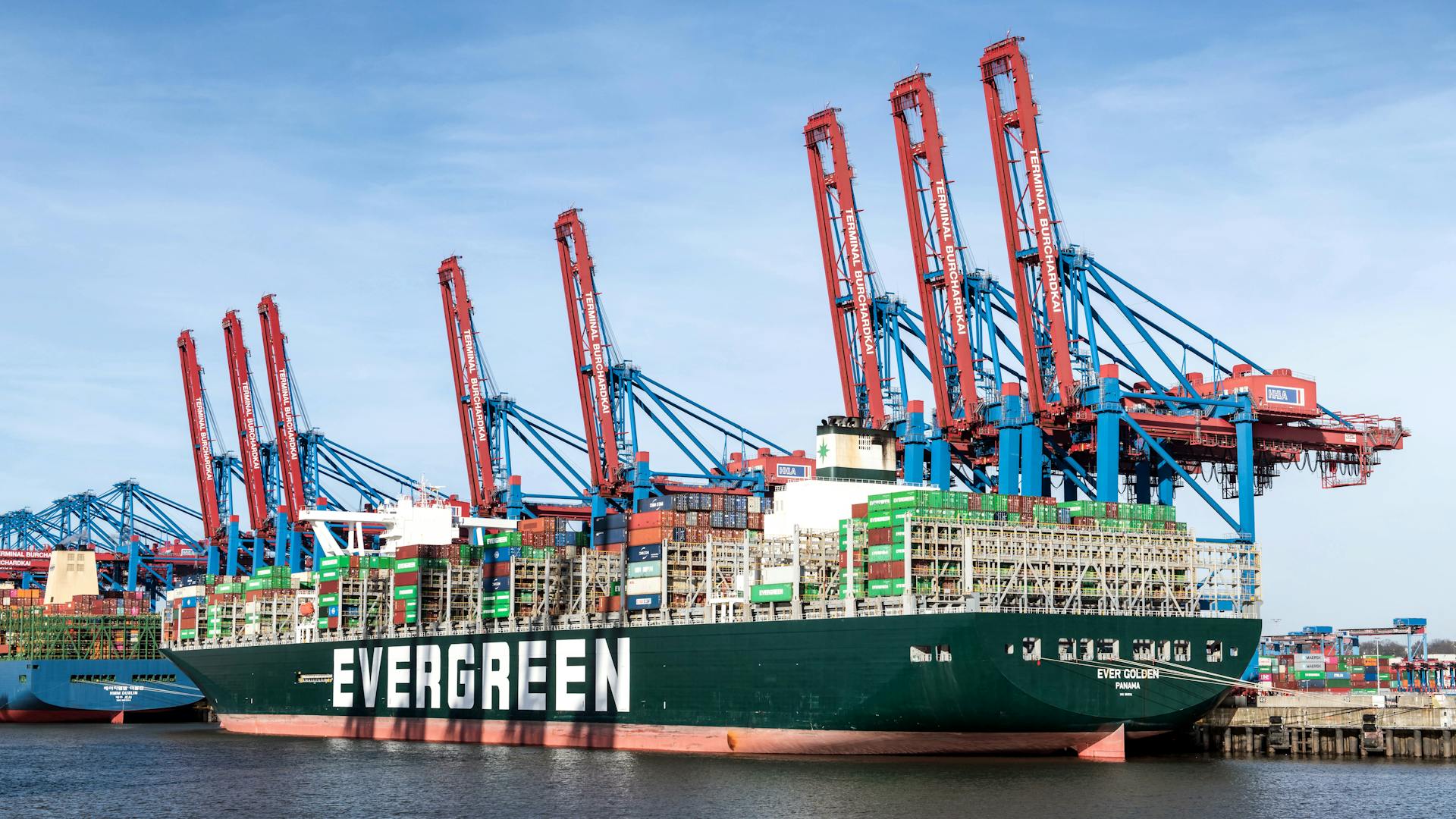
The Hamburg Port is a hub of innovation, with several notable events and developments taking place in recent years. The Port of Hamburg's container terminal, Tollerort, has undergone significant modernization efforts to improve efficiency and capacity.
In 2020, the Hamburg Port welcomed the largest container ship in the world at that time, the Seago Istanbul, which marked a milestone in the port's history. The ship's massive size and cargo capacity highlighted the port's continued importance as a major trade hub.
The Hamburg Port's strong connections to the rest of Europe and beyond make it an attractive location for businesses and investors.
Prepared for Future
The Port of Hamburg is a shining example of how to prepare for the future. The Hamburg Port Authority (HPA) manages the entire port area, leasing out spaces and taking care of infrastructure.
Approximately 1,500 companies take care of their own facilities and cranes. This collaboration between the HPA and port companies has given Hamburg a leading role in digitalization.

The port's digitalization strategy is focused on sustainability, virtual reality, and drone use. Hamburg's Vessel Coordination Center (HVCC) is a game-changer in ship call coordination, advising shipping companies on how to save fuel and reduce CO2 emissions.
The HVCC serves as a role model for traffic control worldwide. Its success is a testament to the port's forward-thinking approach to innovation.
World Premiere at Unikai Terminal:
The Port of Hamburg is the first in the world to use the technical innovation carpodX for vehicle inspection.
At the world premiere of carpodX at the Unikai terminal in Hamburg, the Port of Hamburg showcased its commitment to innovation and efficiency.
The Unikai terminal in Hamburg played host to the world premiere of carpodX, marking a significant milestone in the port's history.
This technical innovation has the potential to revolutionize vehicle inspection processes, and the Port of Hamburg is at the forefront of this development.
Frequently Asked Questions
How do I get into Hamburg from a cruise port?
You can easily reach Hamburg's city centre from the cruise port by taking a public ferry or using public transport, which takes around 15-20 minutes. The Hamburg Cruise Centre Altona is conveniently located near the city's famous fish market on the Elbe River.
Which city is Hamburg located in?
Hamburg is located in Germany. Specifically, it is situated in the northern part of the country.
How far is Hamburg cruise port from airport?
The distance from Hamburg cruise port to Hamburg Airport (HAM) is approximately 17 km by air and 19.8 km by road. You can travel between the two locations by train in about 32 minutes.
Sources
- https://www.gem.wiki/Port_of_Hamburg
- https://www.hafen-hamburg.de/en/portofhamburg/port-of-hamburg/
- https://www.vesselfinder.com/ports/DEHAM001
- https://ports-directory-ctbrh2f9d6h4ddhf.eastus2-01.azurewebsites.net/ports/port/hamburg
- https://www.hamburg-travel.com/see-explore/maritime-hamburg/port-of-hamburg/
Featured Images: pexels.com
